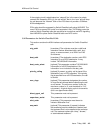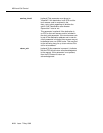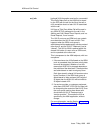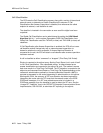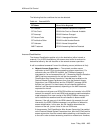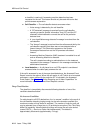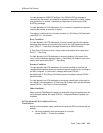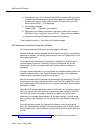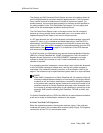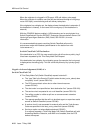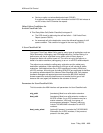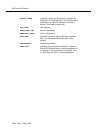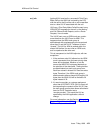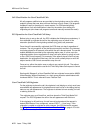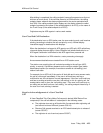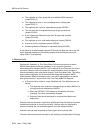
ASAI and Call Control
Issue 7 May 1998
4-17
The Alerting and Call Connected Event Reports are sent to the adjunct when the
call is being delivered at a physical endpoint (agent/extension). The Connected
Party number item and its extension are included in these event reports. For
announcements, the connected party extension is the same as that specified for
the calling endpoint in the Third Party Make Call request. For hunt groups and
splits, this is the member/agent extension receiving the call.
The Call Ended Event Report is sent to the adjunct when the call is dropped
because of a busy, reorder, denial, answer-back tone, or no-answer result. A
separate Dropped Event Report is not sent for these outcomes.
If a SIT was detected, the call is either dropped (call ended message is sent with
cause=SIT value), or it is considered answered depending on how the ECS is
administered. If an ISDN progress message is received with a cause value that
maps to a SIT tone, then a call is dropped or answered depending upon the ECS
administration. See Table 4-2 on page 4-13 for definitions of the SITs detected
and cause value mappings.
For G3V3 and later, an ASAI adjunct may request Answering Machine Detection
(AMD) for a Switch-Classified call. If AMD is requested for a call, the receipt of
Network Answer Supervision or the ISDN CONNECT message is no longer
sufficient to classify the outcome of a call. Further classification by the call
classifier is required.
If an answering machine is detected, a cause value is sent in either the Answered
or the Call Ended message to indicate such, and the call is either dropped or
connected. If the treatment selected is connect, an Event Report is sent to the
adjunct. The treatment may be specified either system-wide or on a per-call basis.
NOTE:
When AMD is requested on a Switch-Classified call, the reporting of the call
outcome is delayed because detection of voice energy is no longer sufficient
to classify a call, and further classification is required to distinguish between
a live answer and a machine answer. However, the maximum number of call
classifiers required for Switch-Classified calls need not be increased, since
the increase in average holding time for call classifiers is minimal (up to two
seconds). AMD uses the following Call Classifiers: TN744B (or later), and
TN2182.
For Switch-Classified calls, the COR of the ASAI link is used to determine whether
a call can be made to the destination indicated in the request.
Switch-Classified Call Originator
When the destination answers, the originator receives ringing. If the originator
intraflows with priority, the new destination receives priority ringing. The originator
receives the zip tone if it is in auto-answer mode.



